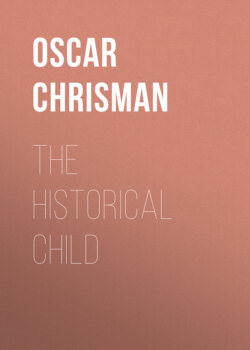Читать книгу The Historical Child - Oscar Chrisman - Страница 21
На сайте Литреса книга снята с продажи.
The People.
ОглавлениеTable of Contents
The origin of the people found in Peru at the time of the Spanish conquest is unknown. The people themselves held to a tradition that the empire began with a settlement in the Cuzco valley, the central region of Peru. By the time of the coming of the Spaniards in the first part of the sixteenth century, through military expeditions this Inca power had been extended to include the country from the river Ancasmayu, just north of the city of Quito, Ecuador, to the river Maule, just south of the city of Santiago, Chile, or from about the second degree of north latitude to the thirty-seventh degree of south latitude, territory embraced at the present time by Ecuador, Peru, Bolivia, part of Chile, and north-west Argentina. Before these Inca people there seemed to have existed a race of well advanced people who left imposing architectural remains that the Inca people were unable to account for. To hold together the parts of the empire, great roads were built leading from Cuzco, the capital, to the extremities of the country. One of these great roads ran over the grand plateau north to Quito and south to Chile, and a second one ran each way, north and south, along the lowlands on the border of the ocean, and these two were connected by cross-roads. "The road over the plateau was conducted over pathless sierras buried in snow; galleries were cut for leagues through the living rock; rivers were crossed by means of bridges that swung suspended in the air; precipices were scaled by stairways hewn out of the native bed; ravines of hideous depths were filled up with solid masonry; in short, all the difficulties that beset a wild and mountainous region, and which might appall the most courageous engineer in modern times, were encountered and successfully overcome. The length of the road, of which scattered fragments only remain, is variously estimated at from fifteen hundred to two thousands miles; and stone pillars, in the manner of European mile-stones, were erected at stated intervals of somewhat more than a league, all along the route. Its breadth scarcely exceeded twenty feet. It was built of heavy flags of freestone, and, in some parts at least, covered with a bituminous cement, which time has made harder than the stone itself."17 Along these roads were a series of post-houses for couriers, selected for their swiftness of foot, who carried messages back and forth between the capital and the different parts of the empire. The statement is made that these couriers covered the distance from Quito to Cuzco, over a thousand miles, in eight days. Along the routes were also placed storehouses with provisions for troops or for those who travelled on state affairs, who really were the only travellers.
At the time of the Spanish invasion, Peru was a huge bureaucracy, which had evolved from a primitive communism as the territory was extended by conquest. The empire was divided into provinces and placed under rulers, below whom was a hierarchy of officials, running down to an inspector of ten heads of families. A careful census was kept of the people and resources of each province, which censuses were sent regularly to Cuzco. From these returns was estimated the tribute each person was to give to the state, which was not paid in money but in labor or products. No one but the sick was permitted to remain idle and there was constant supervision over all. No man was exempt except by special regulation from agricultural work and military service. "From the cradle to the grave the life of the individual was marked out for him; as he was born so would he die, and he lived his allotted span under the ceaseless supervision of officials. His dress was fixed according to his district; he might not leave his village except at the bidding of the state, and then only for state purposes, he might not even seek a wife outside his own community."18 Yet every one was cared for, widows, orphans, aged, and sick, in fact no one was allowed to suffer. The state stored in buildings provisions for times of scarcity of crops, so as to prevent famine. At the head of the empire was the sovereign and who bore the title of Sapa Inca, Only Inca, the divine ruler; next to the sovereign came the nobility of royal blood, the Inca nobility, and who held the principal offices of the state; then came a lower nobility, the Curaças, who were of the original rulers of conquered states; and last were the common people.
